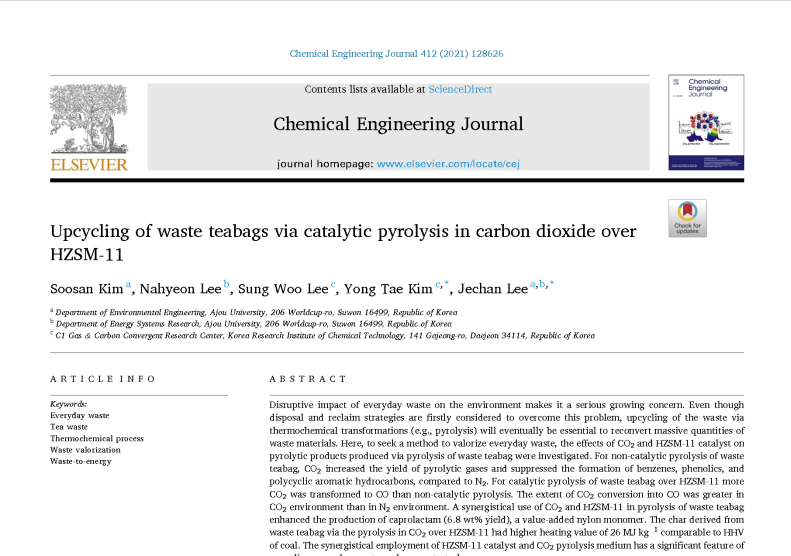 Upcyling of waste teabags via catalytic pyrolysis in carbon dioxide over HZSM-11
Upcyling of waste teabags via catalytic pyrolysis in carbon dioxide over HZSM-11
Soosan Kim, Nahyeon Lee, Sung Woo Lee, Yong Tae Kim and Jechan Lee
Abstract
Disruptive impact of everyday waste on the environment makes it a serious growing concern. Even though disposal and reclaim strategies are firstly considered to overcome this problem, upcycling of the waste via thermochemical transformations (e.g., pyrolysis) will eventually be essential to reconvert massive quantities of waste materials. Here, to seek a method to valorize everyday waste, the effects of CO2 and HZSM-11 catalyst on pyrolytic products produced via pyrolysis of waste teabag were investigated. For non-catalytic pyrolysis of waste teabag, CO2 increased the yield of pyrolytic gases and suppressed the formation of benzenes, phenolics, and polycyclic aromatic hydrocarbons, compared to N2. For catalytic pyrolysis of waste teabag over HZSM-11 more CO2 was transformed to CO than non-catalytic pyrolysis. The extent of CO2 conversion into CO was greater in CO2 environment than in N2 environment. A synergistical use of CO2 and HZSM-11 in pyrolysis of waste teabag enhanced the production of caprolactam (6.8 wt% yield), a value-added nylon monomer. The char derived from waste teabag via the pyrolysis in CO2 over HZSM-11 had higher heating value of 26 MJ kg−1 comparable to HHV of coal. The synergistical employment of HZSM-11 catalyst and CO2 pyrolysis medium has a significant feature of upcycling everyday waste such as waste teabag.
